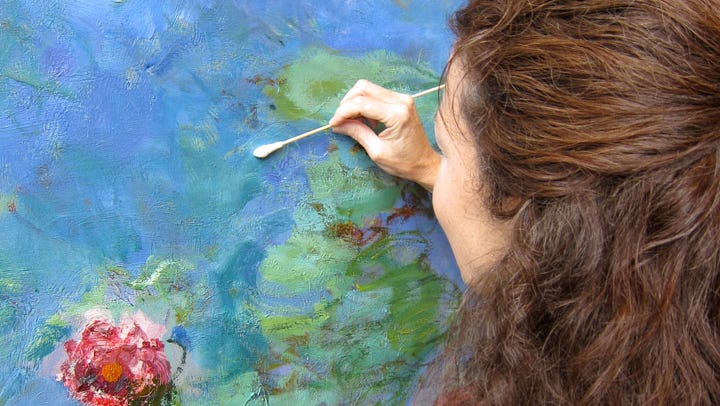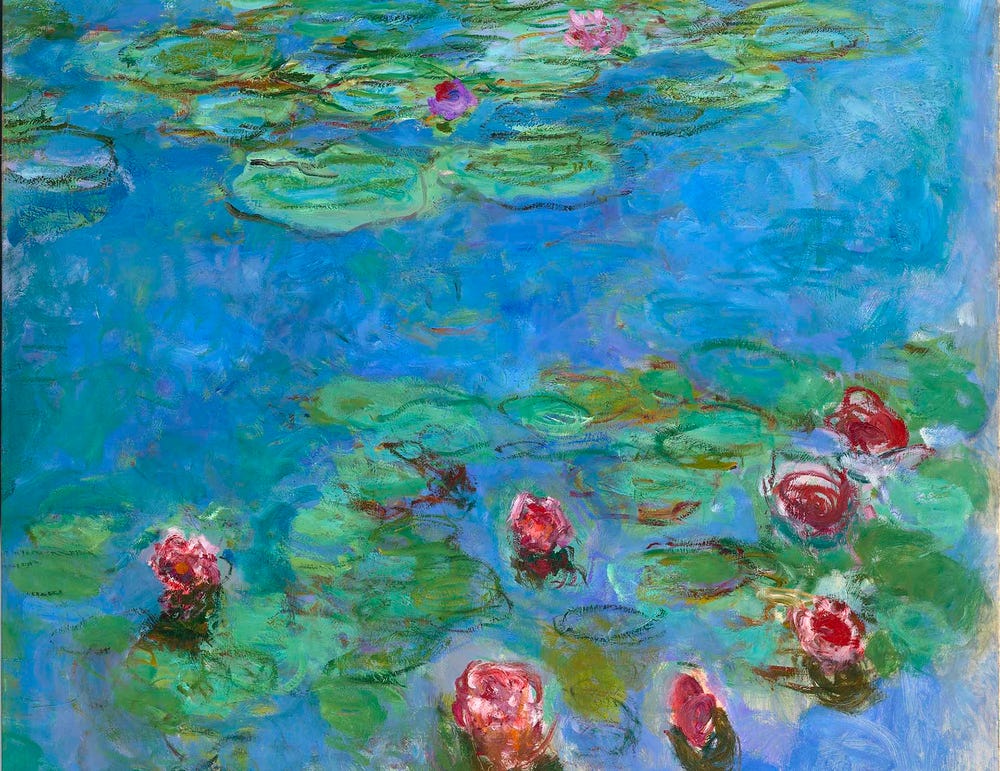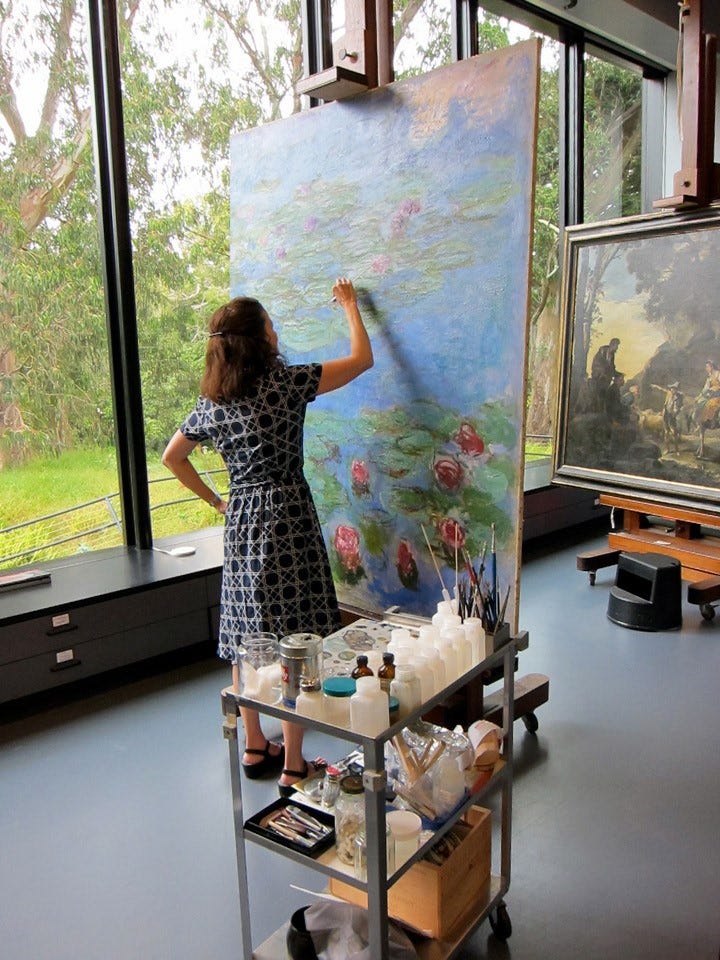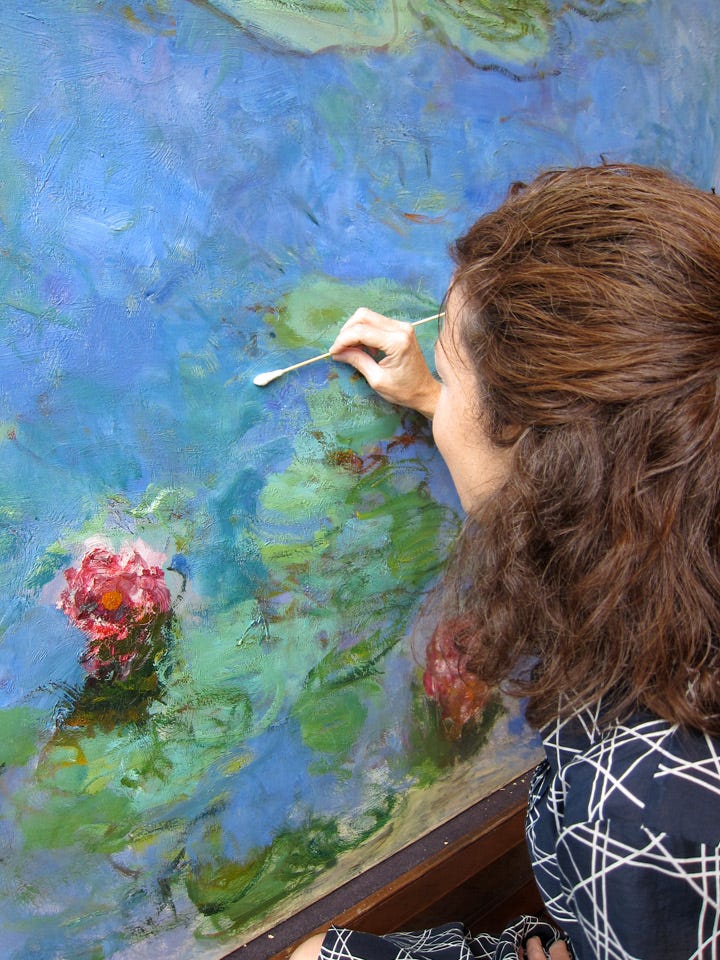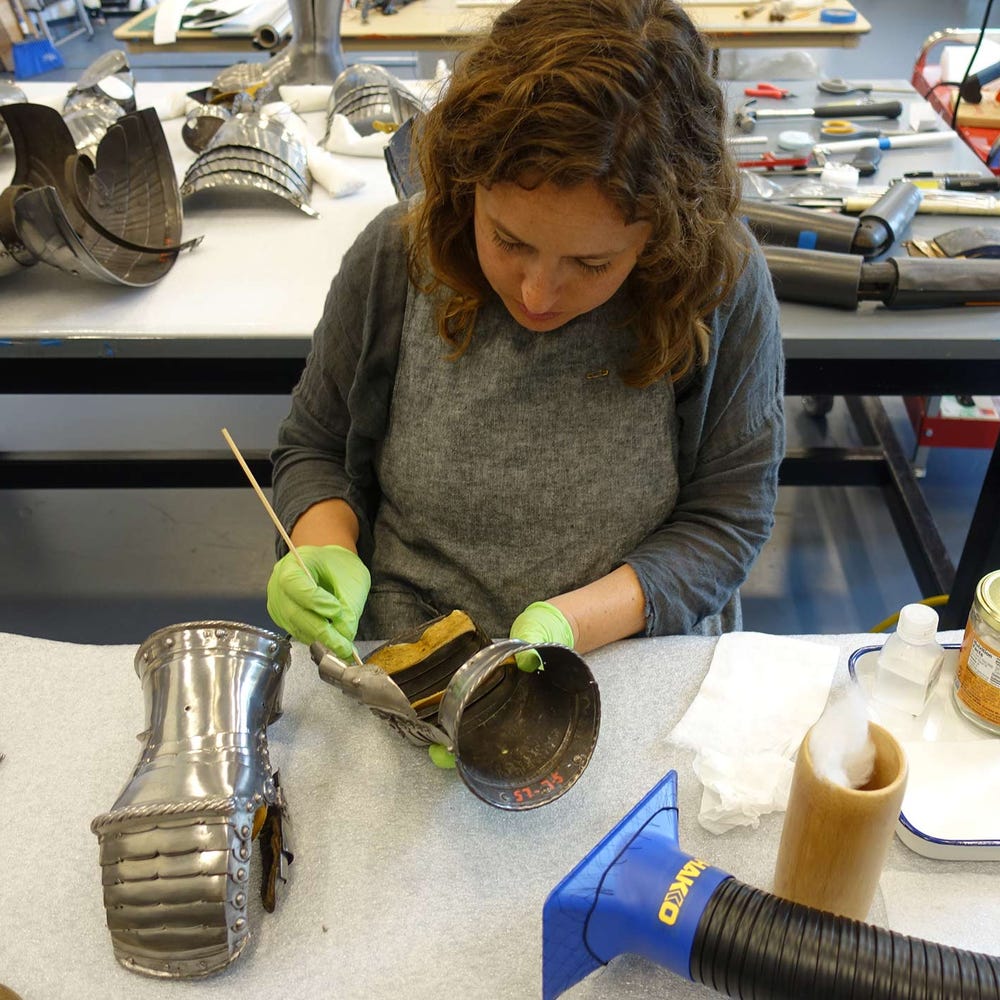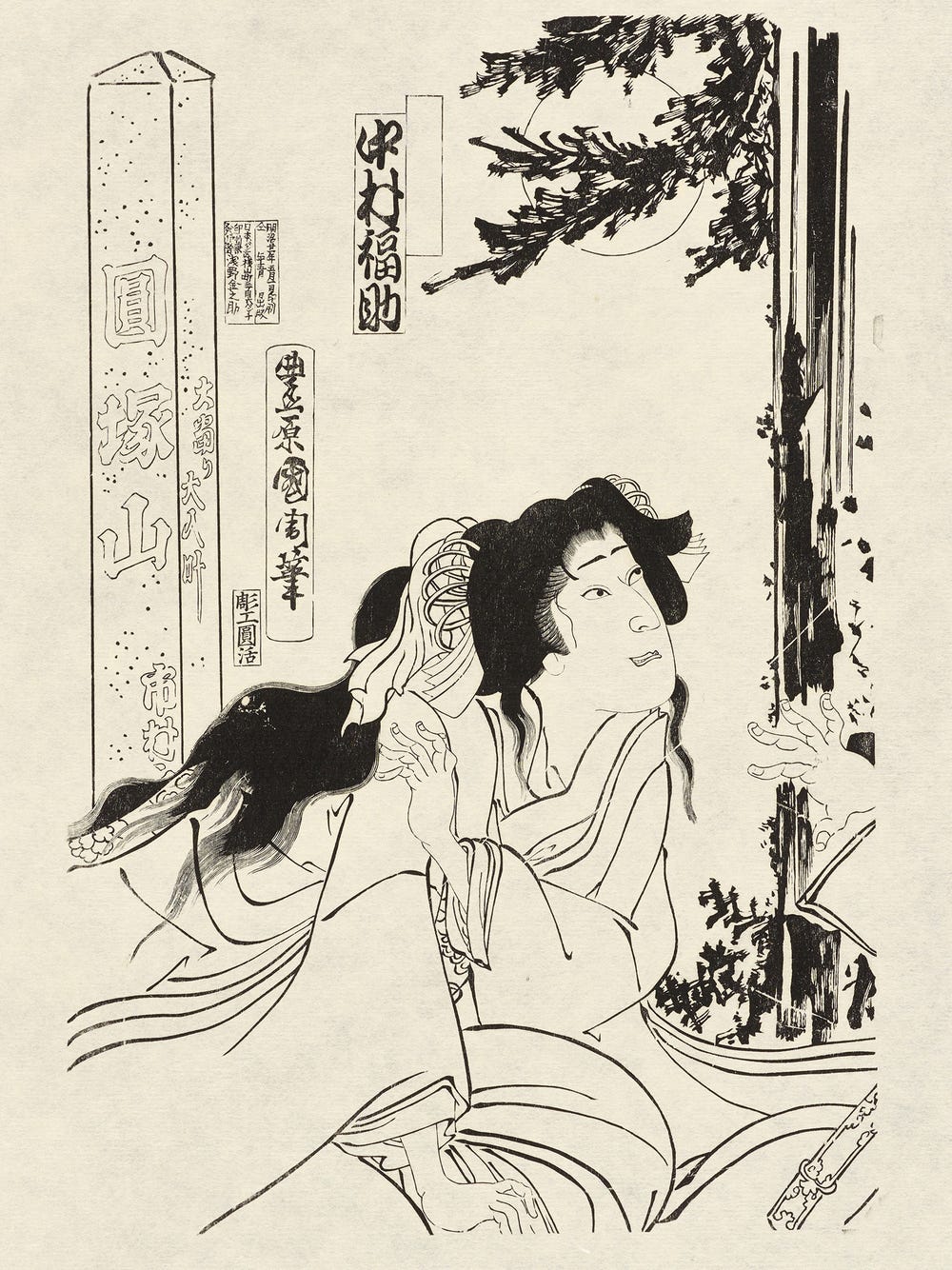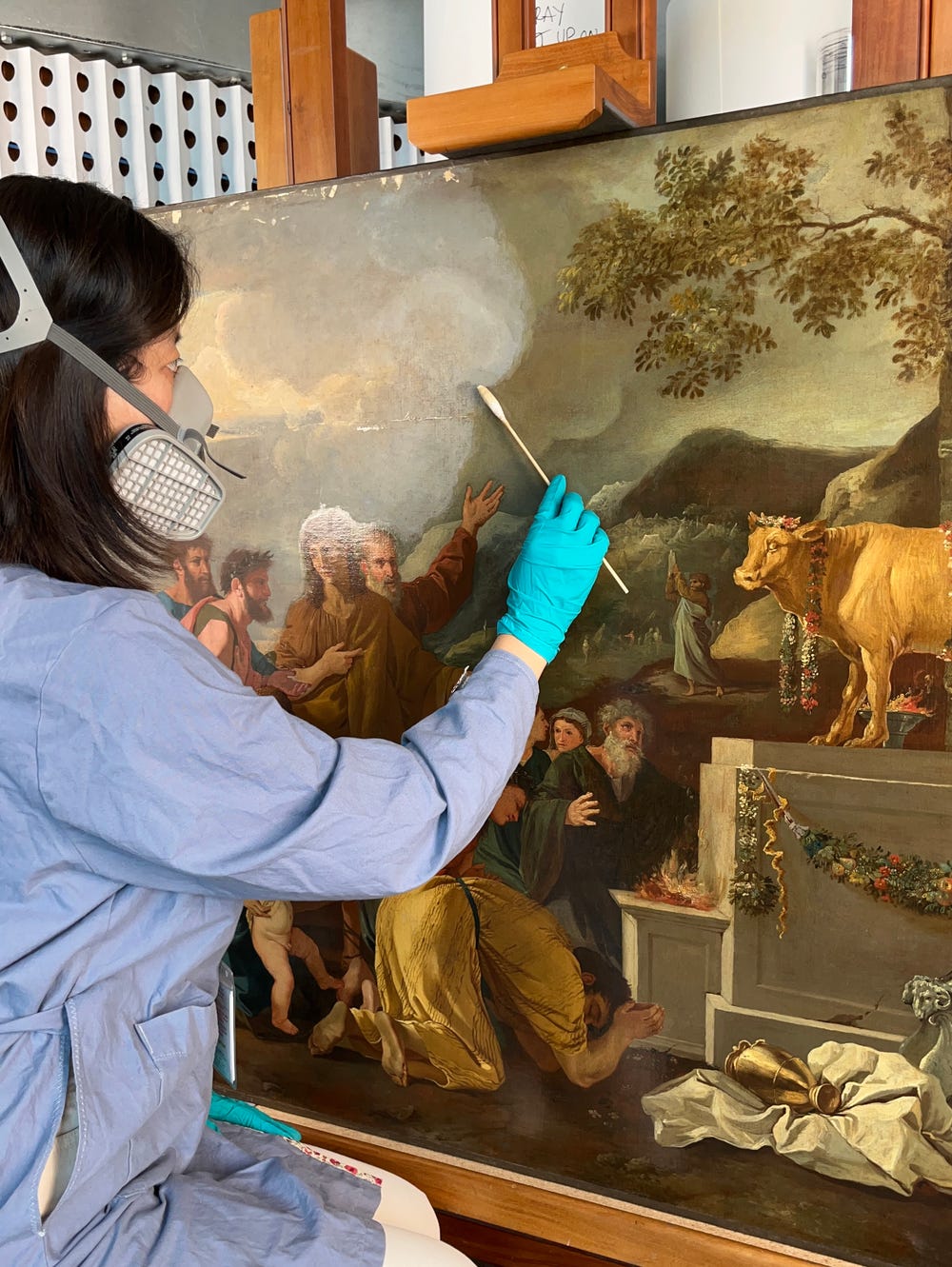Monet’s Water Lilies Returns to the Legion of Honor
November 14, 2011
Claude Monet’s incomparable Water Lilies has returned to Gallery 19 at the Legion of Honor. Following its display in two important temporary exhibitions, Water Lilies visited the Fine Arts Museums’ paintings conservation laboratory. Here is a behind-the-scenes look at the painting’s whereabouts over the past year.
Claude Monet (French, 1840–1926), Water Lilies, ca. 1914–1917. Oil on canvas, 65 3/8 x 56 in. (166.1 x 142.2 cm). Museum purchase, Mildred Anna Williams Collection, 1973.3. Photograph by Joseph McDonald, courtesy Fine Arts Museums of San Francisco
Water Lilies traditionally occupies a place of honor in the Legion’s permanent collection galleries. As the vista piece that anchors the space running through galleries 14 to 19, this painting is an integral and beloved feature of the Museums’ Impressionist collection. Because of its significance and its size, this painting almost never leaves the Legion’s Impressionist gallery.
However, 2011 presented two very different and exciting opportunities to share this painting with a wider public. The first stop was the Grand Palais, Paris, which hosted the first major Monet retrospective exhibition in Paris held in 30 years. Organized by the Réunion des Musées Nationaux (the organization of national museums in France), this exhibition was seen by hundreds of thousands of visitors; due to popular demand, the galleries remained open 24 hours a day during the final weekend!
The next stop for Water Lilies was the Wadsworth Atheneum Museum of Art in Hartford, Connecticut, where it was displayed in Monet’s Water Lilies: An Artist’s Obsession. This intimate exhibition traced Monet’s fascination with his most iconic subject, the water lily, from 1895 until his death in 1926. In this presentation, our Water Lilies was displayed with a select group of paintings featuring the same subject that revealed the range of styles and varied approaches with which Monet painted this favored theme.
When Monet’s Water Lilies returned from loan in June 2011, Lynn Orr, curator in charge of European art, and paintings conservator Tricia O’Regan decided it was the perfect opportunity to treat the synthetic varnish that had been on the picture since it came into the collection in 1973. It was their hope that removing the varnish would reveal a more correct paint surface similar to other unvarnished water lily pictures painted during this period, and in closer keeping with the artist’s original intent.
Varnish on a paint layer saturates the colors and evenly coats the surface. It has been common practice to varnish paintings since at least the 16th century. While varnish imparts an even saturation and sheen to the surface, an unvarnished painting typically has variations in gloss ranging from rich passages to dry matte areas.
The treatment was extremely successful. After removing surface grime, the slightly discolored synthetic coating was removed with cotton swabs using mild solvents.
